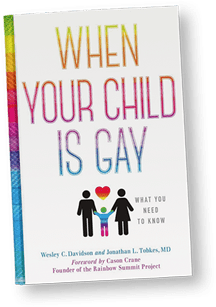I remember seeing this striking headline for a Planned Parenthood ad at New York’s One Club for Art & Copy in 1979. The print advertisement won a Gold Award.
Fast forward to 2018. Kids are having sex younger and some self-identify as LGBT before they even get to high school. Yet their sexual practices seem just as uninformed and perhaps tinged with feelings of immortality as in 1979.
All it takes is one time for youth to acquire an infection, STD or HIV. Despite that reality, the Centers for Disease Control (CDC) released staggering statistics proving that more has to be done to educate youth. Witness:
• More than 1 in 5 new HIV infections are young people between 13 and 24 years old.
• Youth with HIV are least likely to be linked to care of any group.
• Only 10% of high school students have been tested for H.I.V.
• Nearly half (43%) of all sexually active high school students didn’t use a condom the last time.
It’s not just high school. The Human Rights Campaign just released a new comprehensive guide for college administrators, staff, and students for better student health and wellbeing. This guide coincides with National Youth HIV and AIDS Awareness Day (NYHAAD), April 10, whose mission is to increase sensitivity about HIV/AIDS and encourage young people to adopt safer sex and lifestyle practices that include getting tested.
College youth need this important information as well because:
• 80% of new diagnoses occur in people between the ages of 20 and 24.
• 51% of young people living with HIV do not know their status.
• As a group, college-age youth engage in high-risk sexual behavior after using drugs and alcohol, impairing their judgment.
Some challenges for prevention of HIV & AIDS include:
• Inadequate sex education. School could be ensuring that health curricula or materials use language and terminology appropriate for LGBT population. HIV, STD and pregnancy prevention information should be relevant to LGBT youth, not just heterosexual youth.
• The GLSEN 2013 National School Climate Survey found that fewer than 5% of LGBT students had health classes that included positive representations of LGBT-related topics. Among Millenials surveyed in 2015, only 12% said their sex classes covered same-sex relationships.
• Nevertheless, according to the CDC, between 2000 and 2014, the percentage of schools in which students are required to receive instruction on HIV prevention decreased from 64 percent to 41 percent.
Despite the unavailability of LGBT-inclusive sex education, 85% of parents surveyed by the Human Rights Campaign supported discussion of sexual orientation as part of sex education in the high school and 78% of parents of middle schoolers wanted LGBT-inclusive sexual education.
Whether schools are legally barred from teaching more inclusive sex ed. or simply ignore the needs of their students, parents need to pick up the slack and educate their own kids.
Parents should instruct their children about safe sex, the facts about STDs, including HIV and AIDS, the dangers of risky sex after too much alcohol and/or drugs. Youth have the right to know where to facilitate access to community-based providers who have experience providing health services, including HIV/STD testing and counseling social and psychological services to LGBT youth.
As most youth get their sexual information from peers, mostly faulty, be sure to give your child, whether LGBT or cisgender, knowledge that he can use for his own wellbeing.
I

When Your Child Is Gay: What You Need To Know
For more detailed advice, see book, co-authored with a mother of a gay son and a psychiatrist, Jonathan L. Tobkes, M.D.